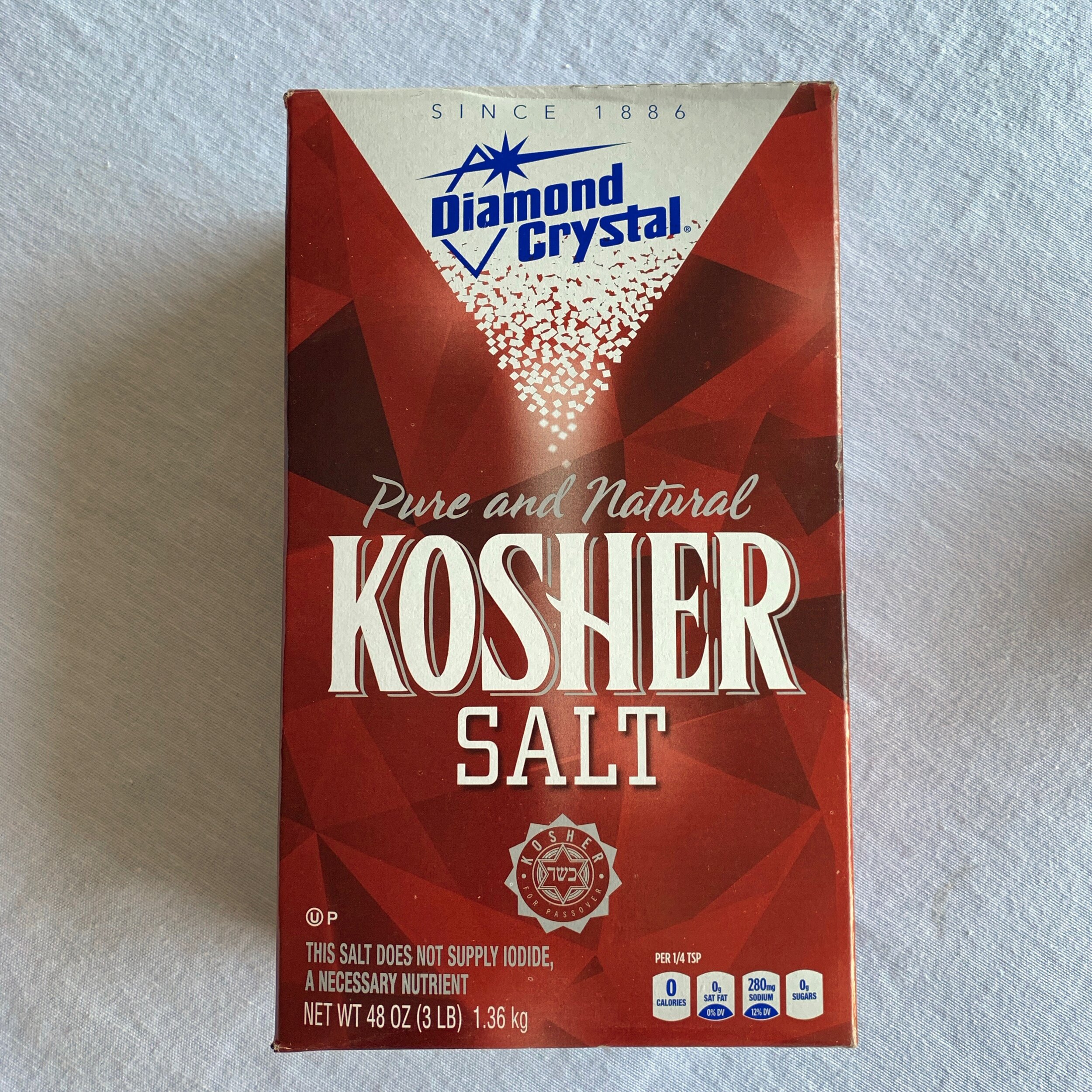Salt
The purpose of salt is to bring out the natural flavors of a dish. Ideally you should not taste salt in a dish, unless salt is a component of the dish like a salted pretzel or olives that were cured in salt.
Diamond Crystal Kosher Salt
is the salt you want to have in a small dish next to your stove. Forget the grinder or the salt shaker. It is best to have your salt in a small bowl so you can use your fingers to pinch your desired salt amount, whether its a small pinch or a big pinch. With time you will get a feel for how much salt to add
Most professional kitchens use this brand of salt. Samin Nosrat from, Salt, Fat, Acid and Heat raves about it as well. It is so affordable that you can dump a whole box of it into a brine. It also does not contain iodine like table salt, which gives salt a bitter flavor.
Himalayan salt, sea salt or coarse salt should not be used as everyday salts. I only use these salts if I can’t find my trusty red box.
Diamond Crystal Kosher Salt is ideal due to its fine texture, which allows it to dissolve easily into dishes. Other salts like Morton’s Kosher salt are too coarse and take more heat and agitation to dissolve into a dish.
Maldon Salt
I like to call this crunchy salt. I use it as a finishing salt to add a textural crunch to dishes. You want to add it at the end of cooking, as the heat and moisture will dissolve the crystals. It works great for topping sliced steak, onto of soft burrata or on chocolate chip cookies to contrast with the sweetness.
Maldon Salt is defined by its pyramid shape, which is processed on brick flues. This salt actually comes from a salty river in Essex, England. Maldon has been making salt since the Roman Times dating back to 1086.




